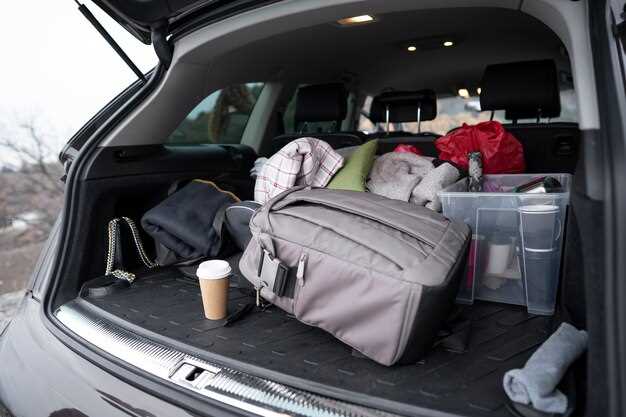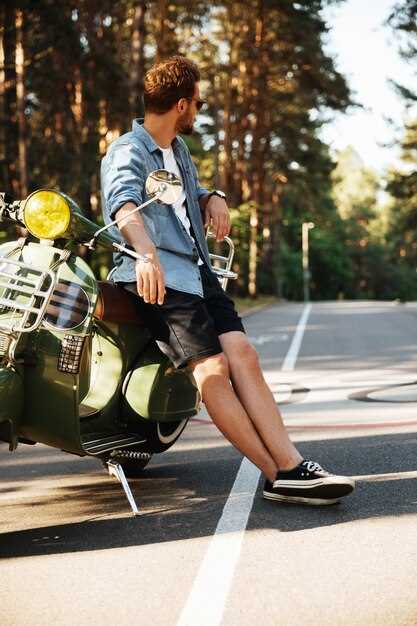
Embarking on a multi-day motorcycle adventure is an exhilarating experience, but successful travel begins long before you hit the road. Proper packing is essential to ensure you have everything you need while minimizing weight and maximizing space. The right approach not only enhances your riding comfort but also ensures safety during your journey.
Before you start loading up your bike, consider the type of terrain and environment you will encounter. Different terrains may require specialized gear, and being prepared for varying weather conditions can make a significant difference in your overall experience. Understanding these factors will help you prioritize what to pack, ensuring that you are equipped for any situation.
Additionally, focus on efficient packing techniques that allow you to organize your belongings. Using compression bags for clothing and stacking items strategically can create more space and balance on your motorcycle. With the right techniques, you can significantly enhance your ride while ensuring that all your essentials are easily accessible.
Choosing the Right Luggage System for Your Bike
When embarking on a multi-day motorcycle adventure, selecting the appropriate luggage system is essential for a successful trip. Your choice affects not only how much you can carry but also the overall balance and handling of your motorcycle.
Types of Luggage Systems
There are several types of luggage systems available, including hard cases, soft bags, and tail bags. Hard cases, often made from durable materials like ABS or aluminum, provide excellent protection for your gear against impacts and weather. However, they can add weight and bulk to your bike. Soft bags are lighter and more flexible, allowing for easier mounting and storage, but they may not offer the same level of protection. Tail bags and tank bags provide additional carrying capacity and easy access to frequently used items.
Capacity and Organization
Assess the capacity you need based on the duration of your trip and essential items. Look for systems that allow for organized packing with compartments or attachable pouches. This not only helps with space management but also enables quick access to items like tools, first aid kits, and snacks without rummaging through everything.
Attachment Methods
Ensure that the luggage system securely attaches to your motorcycle. Common attachment methods include straps, quick-release systems, and dedicated mounting racks. Each method has its pros and cons. Straps can be versatile but may require frequent adjustments; dedicated racks offer stability but may necessitate additional investment. Choose a method that aligns with your riding style and the type of motorcycle you have.
Weather Resistance
Weather can be unpredictable on the road, making weather resistance a critical factor. Look for luggage that comes with waterproof covers or is made from water-resistant materials. Sealed seams and zippers can further enhance your gear’s protection against rain, mud, and dust.
Ease of Use
Choose a luggage system that is easy to install and remove. This allows for quick transitions when you’re off the bike. Look for features like grab handles and rollers if your bags are large or cumbersome, making it simpler to transport gear to and from your bike.
Test Before You Ride
Before your adventure, take the time to test your luggage system. Pack it as you would for your trip and take a short ride to assess balance and comfort. Make any necessary adjustments to ensure stability and ease of use. This will give you confidence as you hit the road.
Ultimately, the right luggage system will enhance your riding experience by providing secure storage and easy access to your essentials while maintaining the performance of your motorcycle. Choose wisely, and enjoy your multi-day journey!
Must-Have Gear for Varying Weather Conditions

When embarking on a multi-day motorcycle adventure, being prepared for varying weather conditions is crucial for both comfort and safety. Here are essential gear items to consider that will keep you protected no matter the forecast.
1. Waterproof Riding Jacket: A good quality waterproof jacket is vital. Look for one with breathable fabric and adjustable ventilation. This will ensure you stay dry during unexpected downpours while remaining comfortable on hot days.
2. Insulated Layers: Packing thermal base layers and mid-layers will help you adapt to changing temperatures. These layers trap heat and wick moisture away, keeping you warm in cold conditions without adding bulk.
3. Waterproof Pants: Just like your jacket, waterproof riding pants are essential for rainy conditions. Choose pants that easily slip on over your riding gear and have ventilation options to keep you from overheating.
4. Gloves for All Seasons: Invest in a pair of waterproof gloves for wet weather and a pair of insulated gloves for chilly rides. Having a backup set ensures your hands stay warm and dry regardless of the conditions.
5. Neck Gaiter or Balaclava: A neck gaiter or balaclava provides extra protection against wind, rain, or cold temperatures. These items are lightweight and can be easily packed, making them versatile for various weather scenarios.
6. Durable Footwear: Waterproof riding boots with good insulation will protect your feet from rain and cold. Look for boots that offer a balance of comfort and safety, ideally with a sturdy sole for grip and support.
7. Layered Rain Gear: A packable rain suit is a smart addition, as it can be easily stored when not in use. This gear should fit over your riding attire quickly, ensuring you can react promptly when the weather turns.
8. Weather-Resistant Saddlebags: To protect your gear and belongings from the elements, use weather-resistant saddlebags. Ensure that they are made from durable material and include waterproof liners.
9. Quick-Dry Towels: When traveling, it’s helpful to have quick-dry towels on hand for unexpected situations. These can be used to dry off after rain or wipe down gear, ensuring you stay comfortable on the road.
By equipping yourself with these must-have gear items, you can confidently tackle any weather conditions that come your way during your motorcycle adventure.
Packing Techniques to Maximize Space and Balance

When preparing for a multi-day motorcycle adventure, effective packing is crucial to ensure comfort and efficiency on the road. The right techniques can help you maximize space and achieve a balanced load, minimizing the impact on your bike’s handling.
Start by choosing the right luggage. Hard cases provide more structure, while soft bags can conform to available space. Opt for luggage that has multiple compartments to help you organize your gear efficiently. Consider using a waterproof bag or cover to protect your items from the elements.
Roll your clothing items instead of folding them. This technique not only saves space but also minimizes wrinkles. Additionally, placing smaller items inside your shoes or helmets can prevent them from being wasted. Use compression bags for bulkier items like jackets and sleeping bags to shrink them down significantly.
Distribute the weight evenly across your bike. Heavier items should be packed low and as close to the center of the motorcycle as possible. This placement helps maintain stability and control while riding. Use bungee cords or straps to secure items tightly and prevent them from shifting as you travel.
Prioritize essentials while packing. Keep frequently used items, such as tools, snacks, and a first aid kit, within easy reach. Pack less frequently used items at the bottom or in the farthest compartments of your luggage. Always double-check the weight distribution before taking off to ensure a stable ride.
Utilize modular packing systems that allow you to compartmentalize your gear. By creating a system of bags for distinct purposes (clothing, cooking supplies, camping gear), you can access items without unpacking everything. This organization is especially beneficial when you’re in a hurry or setting up camp after a long day of riding.
Remember to leave some space for souvenirs or other items you might acquire during your journey. To do this, consider underpacking initially, allowing room for additional gear without exceeding your bike’s weight limit.
Ultimately, mastering packing techniques can enhance your motorcycle adventure experience, making each ride enjoyable and stress-free. By combining proper luggage choices, smart packing methods, and careful weight distribution, you will be well-equipped for the challenges of the road ahead.